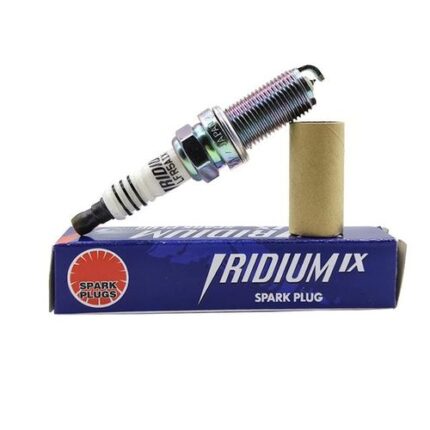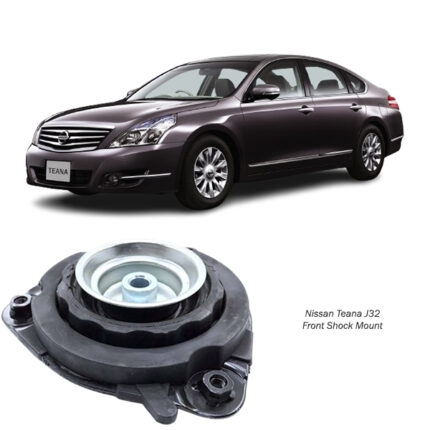-13%
Get Front Shock Absorber Mounting Honda CR-V, RE4, RE7 R/L 51920SWAA01
Front shock absorber mounting is a critical aspect of a vehicle’s suspension system. It plays a crucial role in maintaining ride quality, handling, and overall vehicle stability. Here’s an overview of front shock absorber mounting, its components, and key considerations:
Components of Front Shock Absorber Mounting:
- Shock Absorber:
- The primary component that dampens the vibrations and shocks from the road surface.
- Mounting Bracket:
- The part of the vehicle’s frame or suspension to which the shock absorber is attached.
- Shock Mount (Mounting Plate):
- Connects the shock absorber to the vehicle’s frame. It often includes a rubber bushing to absorb vibrations and reduce noise.
- Top Mount (Strut Mount):
- For vehicles with MacPherson strut suspensions, the top mount connects the top of the shock absorber to the vehicle body. It also includes a bearing to allow the strut to rotate when steering.
- Bolts and Nuts:
- Fasteners that secure the shock absorber and its mounts to the vehicle.
Functions of Front Shock Absorber Mounting:
-
Attachment Point
The primary function of the shock absorber mounting is to securely attach the shock absorber or strut to the vehicle’s chassis and suspension system. This ensures that the shock absorber can perform its role in damping the oscillations of the suspension.
2. Vibration and Noise Reduction
Shock absorber mountings are often designed with rubber or other elastomeric materials that absorb and dampen vibrations and noise from the road. This isolation helps reduce the transmission of harshness and noise from the suspension to the vehicle’s cabin, enhancing ride comfort.
3. Alignment and Stability
The mounting helps maintain the correct alignment of the shock absorber or strut. Proper alignment is crucial for ensuring that the suspension operates efficiently and that the vehicle handles predictably. Misaligned shock absorbers can lead to uneven tire wear and poor handling characteristics.
4. Load Bearing
Shock absorber mountings support the weight of the vehicle and its occupants. They help distribute the load evenly across the suspension system, which is essential for maintaining balance and stability, especially during cornering, braking, and acceleration.
5. Flexibility and Movement Accommodation
The mounting allows for the necessary movement and flexibility of the shock absorber or strut as the suspension system responds to road irregularities. This flexibility is vital for absorbing shocks and vibrations, providing a smoother ride.
Types of Front Shock Absorber Mounting:
- Single Tube vs. Twin Tube:
- Single tube shocks have one cylinder with a piston, offering better heat dissipation.
- Twin tube shocks have two cylinders and provide a more comfortable ride.
- Coilover Shocks:
- These combine a coil spring and shock absorber into one unit, commonly used in high-performance and aftermarket applications.
- Gas-Charged Shocks:
- Use nitrogen gas to reduce aeration and improve performance, providing better damping and handling characteristics.
Installation and Maintenance:
- Installation Considerations:
- Ensure the vehicle is securely lifted and supported.
- Follow the manufacturer’s torque specifications for all bolts and nuts.
- Check alignment and positioning to ensure proper function.
- Inspection:
- Regularly inspect the shock absorbers and mounts for signs of wear, such as leaks, cracks, or damaged bushings.
- Listen for unusual noises, which can indicate worn or loose mounts.
- Replacement:
- Replace shock absorbers and mounts as recommended by the manufacturer or if they show signs of significant wear or damage.
- Always replace in pairs (both front or both rear) to maintain balanced handling.
Symptoms of Worn or Damaged Front Shock Absorber Mounting:
- Excessive Vibration:
- Increased vibrations felt through the steering wheel or seat.
- Noisy Suspension:
- Clunking, knocking, or squeaking sounds when driving over bumps or during steering.
- Poor Handling:
- Reduced stability, increased body roll, or a bouncy ride.
- Uneven Tire Wear:
- Shock absorber issues can lead to irregular tire wear patterns.
Follow us on Facebook for more parts.



